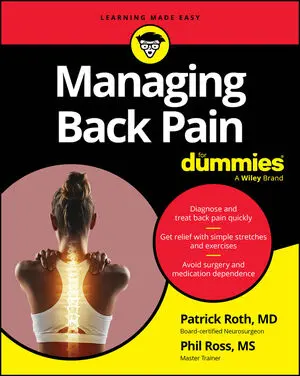Almost everyone has heard the phrase, "No pain, no gain." What most people don't know is the definition of pain. Pain is the body's warning sign that it's in jeopardy of being injured. A more appropriate phase would be, "If it hurts, don't do it." You may be performing an exercise incorrectly, or the exercise may not work well for you. Pain may also indicate that you have an injury you are aggravating by the exercise you are performing.
Knowing how far to take it
During your muscle conditioning exercises, you should gradually increase the amount of weight you're lifting — enough repetitions that you exhaust or deplete your energy to lift it one more time.
The best way to stimulate muscle growth and strength is to push your muscles to a new level. This can be accomplished by changing exercises, increasing your weights, increasing the intensity of your workout (by decreasing the time interval between sets, for example), and pushing your muscles to the point of fatigue or failure. Serious athletes constantly use all of these techniques to adapt their muscles to new stresses.
Remember, in order for your muscles to grow, you need to fatigue them. This simply means that with all your effort you can't perform one more repetition of the exercise, even if the guy next to you offered you the winning lottery ticket. So next time you're conditioning your muscles, play a little mind game with yourself and pretend that someone is working out with you (and yes, you can choose anybody that motivates you). Your partner is offering you a million dollars for each repetition you perform past your goal. If the good-looking imaginary body next to you doesn't motivate you, the million should help you to pull off a few more reps.
Knowing when to quit
Even if you're doing everything right, it is possible to overtrain. Over-training means that you are exercising in excess of your body's capacity to repair itself or adapt to the stresses you present it. It's often difficult to ascertain whether or not you are overtraining. This is when it's really important to listen to your body. If you are overtraining, your body's repair mechanisms are overloaded and you're in prime position for injury.
Common but subtle signs of overtraining are as follows:
- Losing strength
- Feeling tired in the gym
- Losing motivation to work out
- Simply feeling burned out
- Contracting illnesses such as colds and the flu
- Experiencing an elevated heart rate when walking at a normal pace
- Going through uncharacteristic depression
Use this method to check your progress: Begin by taking your resting heart rate first thing in the morning. As soon as you wake up, roll over, look at the clock, and take your heart rate for one minute. Record your heart rate and keep it for future reference.
In general, the higher your resting heart rate, the less physically fit you are, and the lower your heart rate, the more physically fit you are. (Some athletes have resting heart rates in the 40s.) One way to see if you're working out too much is to check your resting heart rate over a few months. See if it has increased, decreased, or remained the same. If your workouts are effective, your resting heart rate will slowly decrease, or at least remain constant. Your body has many ways of telling you when enough is enough, and if your resting heart rate has increased, you should start listening to your body by decreasing your workout frequency or intensity.
Avoiding injuries
Overtraining can lead to injuries. If you get injured, you're likely to quit exercising and never work out again. This isn't good. Your body needs to exercise just like it needs to sleep and eat.
The following list of Do's and Don'ts helps you avoid unnecessary injuries.
- Do watch for your body's warning signs and signals.
- Do perform the exercise correctly.
- Do warm up and stretch before and after exercising.
- Do start out slowly and gradually increase your workouts. (Have you heard this enough?)
- Do relax, breathe, and take time to enjoy your life.
- Don't jump into an exercise too quickly.
- Don't overdo an activity.
- Do get proper rest between exercise sessions.
- Do use proper body mechanics when lifting objects or executing sports skills.
- Don't exercise when you're ill or overtrained.
- Don't return to your normal exercise program until your athletic injuries have healed.
Injuries only put you out of commission and into depression. When your body hurts, your mind goes into a state of depression, making it hard to enjoy any aspect of daily life. Anything good takes time, so take your workouts on a step-by-step basis and you'll soon reach your goals.






